Early American cookbooks often extended beyond the strict confines of the edible to include housekeeping and home economy. As early homes were not equipped with today’s modern conveniences, Americans needed to safely preserve raw foodstuffs, make supplies such as soaps and candles, administer to the sick, and clean laundry and linens. Housekeeping books were aimed at the women in a home, or in some cases, servants, hired hands, or enslaved people. Often households were comprised of two or three generations, with work being performed by all family members, including the children.
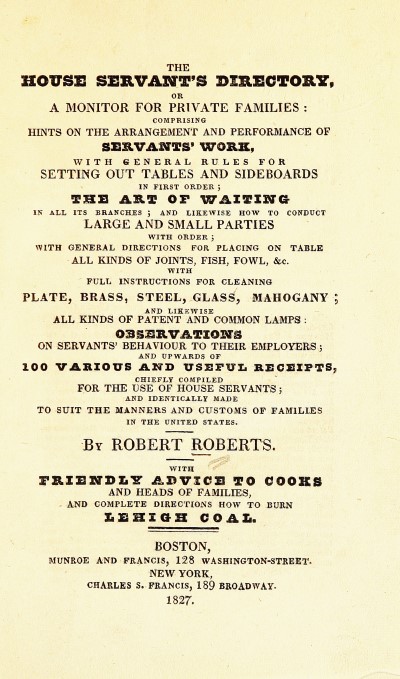 | The House Servant’s Directory (1827)
African American Robert Roberts was born in Charleston, South Carolina, circa 1780. By the 1820s, he was working in Massachusetts as a butler for the wealthy Gore family. Roberts’s instructional manual titled The House Servant’s Directory (1827) became one of the first Black-authored commercially published books in America. As the title indicates, Roberts assembled a comprehensive guide to running a large house, including directions for cooks and heads of families. Look inside (PDF) Item description / catalog record
|
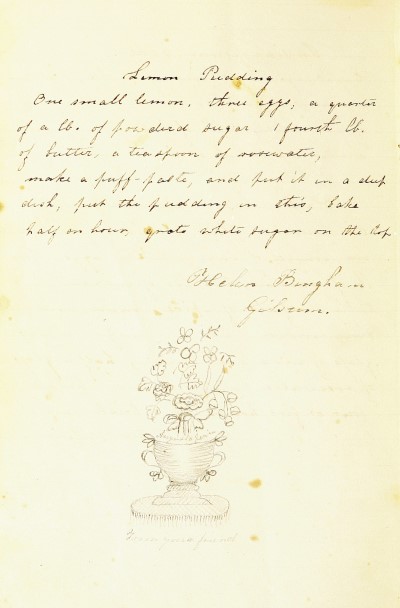 | The Intellectual House-keeper (1835)
During this era, housekeeping was almost exclusively performed by women, but several men, most often teachers, doctors, or ministers, also published helpful books focused on household management. Seth Arnold, a Vermont farmer, minister, and father of four daughters, authored his book, The Intellectual House-keeper (1835), as a series of practical questions to his daughters. The book was issued with blank pages bound in the back and the volume at AAS is filled with dozens of handwritten recipes from various Vermont women and girls. An additional manuscript recipe (pictured at right) was added to The Intellectual House-keeper. Look inside (PDF) Item description / catalog record
|
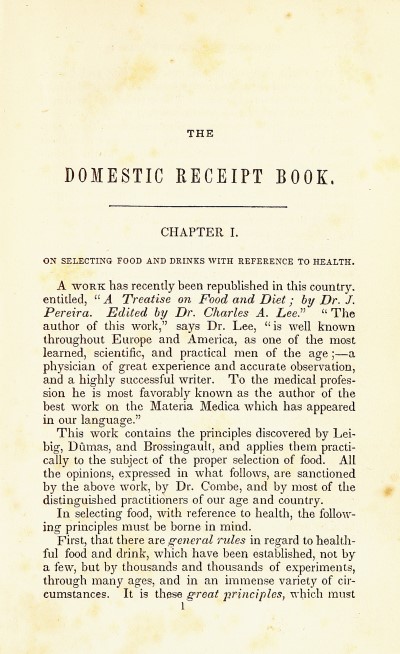 | Miss Beecher’s Domestic Receipt Book (1846)
As cooking and housekeeping were often the responsibility of the women in the household, these topics provided a forum for women writers, allowing some to achieve “star status.” Catharine Beecher wrote Miss Beecher’s Domestic Receipt Book as a supplement to her treatise on domestic economy, also published in 1846. In 1869, she collaborated with her sister, author Harriet Beecher Stowe, on The American Woman’s Home. Look inside (PDF) Item description / catalog record
|
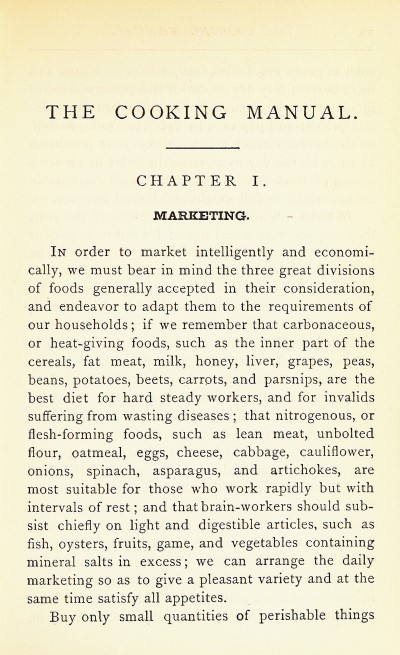 | The Cooking Manual of Practical Directions for Economical Every-Day Cookery (1877)
Juliet Corson, superintendent of the New York Cooking School, focuses on the economics of cooking. In 1877 she published two books, one with a commercial publisher and one self-published. The Cooking Manual of Practical Directions for Economical Every-Day Cookery was published by Dodd, Mead, & Co. in New York. Look inside (PDF) Item description / catalog record
|
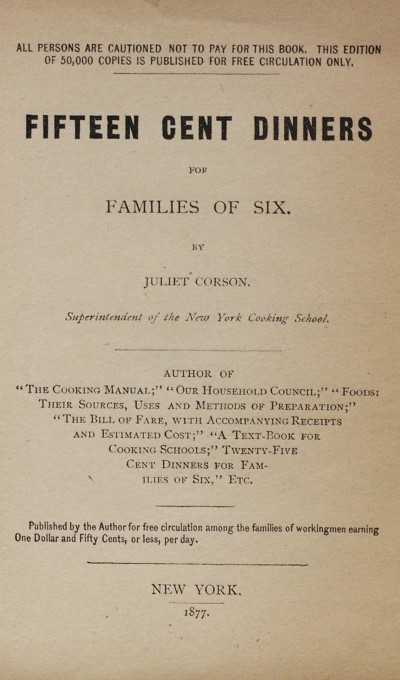 | Fifteen Cent Dinners for Families of Six (1877)
Fifteen Cent Dinners for Families of Six was printed for the author with the admonition emblazoned on the cover: “All persons are cautioned not to pay for this book. This edition of 50,000 copies is published for free circulation only.” Beecher and Corson penned books that aimed to instruct and help women, and in doing so, earned their own positions on a growing roster of successful nineteenth-century women authors.
|
Readers can browse through the cookbooks digital library of over 100 digitized cookbooks or start with thematic introductions describing a few select cookbook titles in the following categories:
- Recipes and Instruction
- History and Science
- Housekeeping and Home Economy
- Food as Medicine
- Regional, Religious, or Ethnic Cuisine